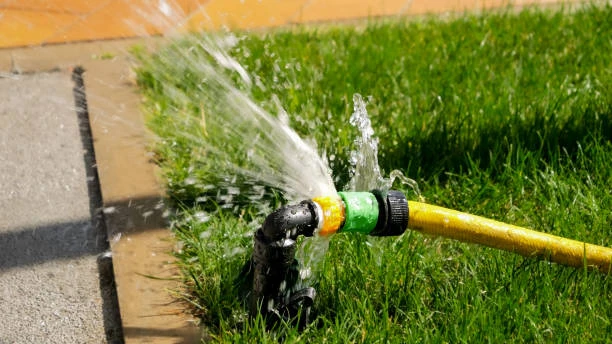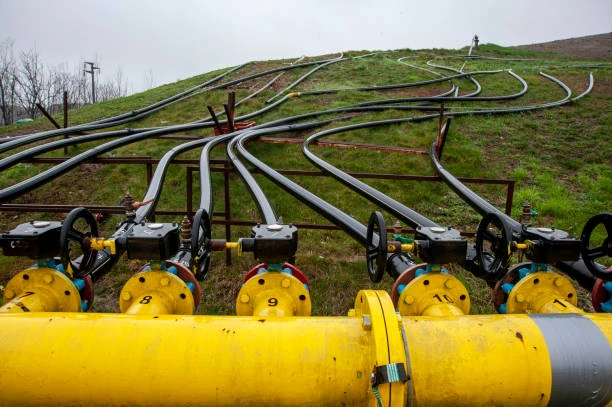In Western Australia (WA), a significant Water pipe crisis has caused widespread concern, particularly in the city’s urban centers. The bursting of a major water pipe has led to serious disruptions in daily life, causing water shortages, traffic delays, property damage, and a strain on public services. This article delves into the details surrounding the water pipe crisis in WA, analyzing the causes, immediate responses, and potential long-term implications for the region. Furthermore, we will explore statements from local authorities, emergency responders, and experts in the field to provide a comprehensive overview of the situation.

1. What Happened: WA’s Water Pipe Crisis
The crisis began when a crucial water pipe, one of the main conduits delivering fresh water to Perth and surrounding areas, burst in the early hours of the morning. This rupture led to a large-scale leak, flooding nearby roads, damaging public infrastructure, and halting water supply to thousands of homes and businesses. The break occurred in a highly populated area of the city, intensifying the impact on residents and local businesses that depend on a steady water supply.
In the wake of the rupture, WA’s local utility company, Water Corporation, responded swiftly by dispatching emergency teams to isolate the break, assess the damage, and initiate repairs. However, the leak caused severe disruptions that have persisted throughout the day, with many parts of Perth and suburban areas experiencing a complete loss of water.
2. Immediate Impact of the Water Pipe Burst
The effects of the water pipe burst were felt almost immediately, affecting both daily life and the functioning of key services in the city. Below are the most significant consequences of the water pipe failure:
2.1. Water Supply Disruption
The primary consequence of the water pipe burst was the disruption of the water supply to thousands of residents. As crews worked to repair the broken pipe, Water Corporation issued an emergency water advisory, urging residents in affected areas to conserve water. The interruption in service led to water outages in both residential and commercial buildings, with some neighborhoods going without water for several hours.
Temporary water stations were set up to provide bottled water to those without access to clean water. These stations became key points of contact for the community, but they were often overwhelmed by the high demand. Some areas were advised to boil water before use due to potential contamination risks from the burst.
2.2. Traffic Chaos and Road Closures
In addition to the disruption of water supply, the ruptured pipe led to severe flooding along key roads in the city. The overflow of water from the burst pipe caused localized flooding that led to the closure of several major streets, including parts of the busy Mitchell Freeway. Commuters faced significant delays as they were diverted to alternate routes, which only compounded the congestion caused by the road closures.
Emergency vehicles were also unable to navigate some of the flooded areas, slowing down the response efforts. Local authorities advised residents to avoid driving through the affected zones, further compounding the traffic chaos. Public transportation routes were rerouted, adding to the frustration of those who rely on buses and trains to get to work or school.
2.3. Property and Infrastructure Damage
The flooding caused by the burst water pipe also resulted in property damage, with several buildings experiencing water seepage that damaged foundations, flooring, and equipment. In commercial areas, some businesses faced financial losses due to water damage to inventory and machinery. Local authorities have begun coordinating damage assessments, and business owners have been encouraged to file insurance claims to recover costs.
In addition to property damage, the extensive flooding has led to the destruction of parts of the city’s infrastructure. Roads, sidewalks, and drainage systems have been compromised in some areas, and repairs will be needed to restore the affected infrastructure to working condition. While the immediate response has focused on the water pipe repair, the long-term recovery will involve significant investment in infrastructure repair and flood mitigation measures.
2.4. Impact on Public Services
Public services, including schools, healthcare facilities, and emergency services, have also been affecte by the water pipe crisis. Many schools in the impacted areas were close or operated with reduced capacity due to the lack of water for sanitation and hygiene. Healthcare facilities also faced challenges, with some hospitals having to rely on backup water supplies for critical operations.
In response, emergency services were place on high alert, with teams working to distribute clean water, assist with evacuation in areas most affecte by flooding, and help businesses and residents recover from the damage. The situation has place a strain on local resources, and the recovery efforts are expecte to continue for weeks.
3. Statements from Local Authorities and Experts
The severity of the situation has prompted numerous statements from local authorities, emergency responders, and experts in water management. These statements provide further insight into the crisis and the measures being take to address it.
3.1. Water Corporation’s Statement
In an official statement, Water Corporation acknowledged the scale of the crisis and assured the public that repair work was a top priority. They emphasized that crews were working around the clock to isolate the damaged section of the water pipe and restore service to affected areas as soon as possible.
“We understand the inconvenience this situation is causing, and we are doing everything in our power to get water back to our customers as quickly and safely as possible,” said Water Corporation spokesperson Sarah Morrow. “This is an unprecedented event, and we appreciate the patience of the public as we work to resolve it.”
Water Corporation also issue guidance on water conservation, advising residents to limit water use for non-essential purposes until the system was fully restore.
3.2. Local Government’s Response
WA Premier Mark McGowan addressed the public, acknowledging the widespread impact of the water pipe break. In his statement, McGowan emphasized the government’s commitment to supporting recovery efforts and ensuring that necessary resources were allocate to affected communities.
“We are deeply concerned about the effects of this crisis on our residents and businesses,” said McGowan. “Our teams are working closely with Water Corporation and local authorities to expedite repairs and minimize the disruption to essential services.”
McGowan also announced that emergency funds would be make available to help those most affected by the water shortages and property damage, including small businesses and households. The government also promised to review the state’s water infrastructure to prevent similar incidents from occurring in the future.
3.3. Expert Opinion on Aging Infrastructure
Experts in urban planning and water management have weighed in on the causes of the water pipe break. Many have pointed to the aging infrastructure in Western Australia’s water supply network as a contributing factor.
Dr. Fiona Goldstein, a water management specialist from the University of Western Australia, explained that much of the region’s water pipe system is decades old. “While the system has served WA well, the aging pipes are becoming increasingly vulnerable to failure, especially under the pressure of growing demand and extreme weather conditions,” she said.
Goldstein called for increased investment in the region’s water infrastructure, including the replacement of older pipes and the installation of more resilient materials capable of withstanding modern-day pressures. Experts also recommend the adoption of advanced monitoring systems to detect potential issues before they escalate into major crises.
4. Long-Term Implications: Addressing Infrastructure Challenges
The burst water pipe crisis in WA serves as a stark reminder of the challenges faced by cities with aging infrastructure. While the immediate response has focused on repairing the damage and restoring services, experts argue that addressing the root causes of such incidents requires long-term solutions. These may include:
4.1. Investment in Water Infrastructure
There is a growing consensus that WA needs to invest heavily in modernizing its water infrastructure. Replacing outdated pipes, enhancing water storage systems, and upgrading treatment plants will reduce the likelihood of future water pipe bursts. Investing in infrastructure improvements also aligns with broader sustainability goals, ensuring that the water supply remains reliable in the face of climate change and population growth.
4.2. Emergency Preparedness and Response
The crisis has underscored the need for robust emergency preparedness plans. Local governments must develop better strategies to respond to large-scale infrastructure failures, including faster repair times and more efficient communication with the public. This may involve improving coordination between public utility companies, emergency services, and other stakeholders.
4.3. Public Education and Water Conservation
Finally, public education on water conservation and the importance of sustainable water management is key to avoiding future crises. Encouraging residents to reduce water waste, conserve water during peak demand periods, and support infrastructure upgrades can help ensure a steady and safe water supply for all.
Conclusion
WA’s water pipe bursting crisis has highlighted both the vulnerabilities of aging infrastructure and the resilience of local communities in the face of disaster. While repairs are underway, the crisis calls for long-term strategies to address the region’s water supply challenges. By investing in infrastructure, improving emergency preparedness, and encouraging sustainable water practices, WA can better safeguard its water supply and ensure that future disruptions are minimized.
FAQs:
- What caused the water pipe to burst in WA? The burst was likely cause by the aging infrastructure and increased pressure on the water pipes, compounded by recent extreme weather conditions.
- How long will it take to restore water supply to affected areas? Water Corporation is working on repairing the damaged pipe, and service restoration is expecte within a few days, though some areas may experience delays.
- Are there any temporary water stations available? Yes, temporary water stations have set up for affected residents and businesses. Bottled water is being distribute at these locations.
- What measures are being take to prevent future water pipe failures? WA is investing in upgrading the aging water infrastructure and adopting modern materials and monitoring systems to prevent future incidents.
- Will businesses be compensat for losses due to water damage? The state government has announced emergency funds to support affected businesses, and they can apply for assistance to recover from property damage.


















